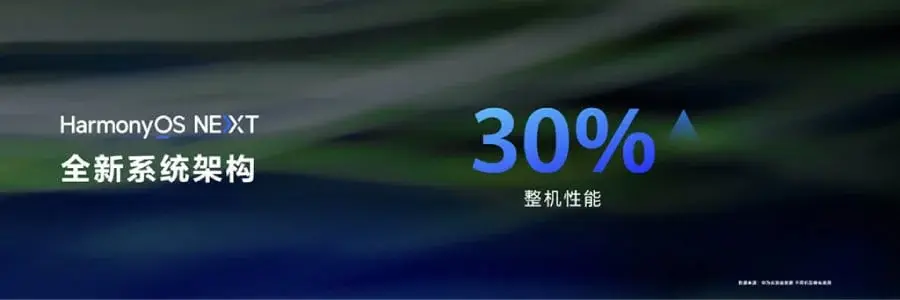Huawei’s annual developer conference, HDC 2024, showcased a major announcement: the official unveiling of HarmonyOS NEXT, the latest version of its proprietary operating system.
Developed over several years, HarmonyOS, known as Hongmeng in China, has shifted away from using the Linux kernel and Android Open Source Project (AOSP) codebase. Instead, it features an entirely independent architecture built on Huawei’s own Hongmeng kernel and system.
Huawei asserts that this new system architecture enhances overall machine performance by 30% and reduces power consumption by 20%.
Currently, HarmonyOS NEXT is in its beta phase and seeks developers and 3,000 pioneer users to participate. Potential testers should note that the beta version might be unstable and could cause data compatibility issues.
One System for All Devices
A key feature of HarmonyOS NEXT is its capability to unify different devices. Huawei claims that developers need to create only one version of an app to ensure a consistent user experience across various Huawei devices. This was demonstrated at the conference with popular apps like Taobao, Yiche, and Bilibili running smoothly on different devices.
Additionally, HarmonyOS NEXT includes an “App Continuation” function, which allows users to start a video call on their tablet and seamlessly transfer it to their phone with a single click. Data sharing between devices is also straightforward, enabling actions like cutting and pasting an image from a phone to a tablet while working on a document.
Harmony Intelligence: AI Built-in
HarmonyOS NEXT extends beyond device connectivity by integrating artificial intelligence (AI), termed “Harmony Intelligence.” This integration brings several features, including:
- AIGC image generation: Create unique images from line drawings, color existing photos, or enlarge them.
- Industry-first AI sound repair: Aids individuals with speech disorders by enhancing communication.
- “Xiaoyi Sees the World” for visually impaired users: Uses AI to describe picture content aloud, aiding in object identification.
- AI-powered controls: Enables third-party apps to use the system’s AI for real-time text reading, smart form filling, and image/text translation.
Xiaoyi Gets Smarter
Huawei’s virtual assistant, Xiaoyi, has been upgraded and is now known as the “Xiaoyi Intelligent Agent,” powered by Pangu Big Model 5.0. Xiaoyi no longer needs a wake word and can be activated by dragging and dropping content onto the navigation bar. This makes interactions more intuitive, allowing Xiaoyi to analyze content and offer actions like generating charts from images or summarizing documents.
Security First with Star Shield
Security is a high priority for Huawei. HarmonyOS NEXT introduces the Star Shield security architecture to safeguard user data. This architecture includes:
- Strict app vetting: Codes and apps not meeting security standards are blocked from installation.
- Multi-device data encryption: End-to-end encryption across devices for enhanced protection.
- Hardware-level encryption: Individual file encryption with unique keys stored on the device’s hardware.
- Permission control: Restricts unnecessary app permissions to minimize privacy risks.
The Road Ahead
HarmonyOS NEXT is still under development, with a commercial release expected in Q4 2024. The beta testing phase has started, and Huawei is actively seeking developers and early adopters to provide feedback and help improve the system.




Leave a Reply